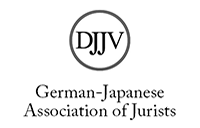Rechtskraft im AUM-Fall: Eine Rückschau auf die Gesetzesanwendung sowie die täterschaftliche Verantwortlichkeit im Todesurteil gegen den AUM-Begründer Matsumoto Chizuoalias Asahara Shôkô
Abstract
The article deals with the death penalty against Matsumoto Chizuo handed down by the District Court of Tokyo (Tokyo Chihô Saiban-sho) on February 27, 2004. Better known under his self-chosen name, Asahara Shôko, he is the founder and former leader of the religious group AUM Shinri-kyô. Complying with all charges of the indictment, this verdict found Matsumoto Chizuo guilty of all the crimes committed within the context of AUM Shinri-kyô. In particular, the verdict found him responsible as the leading figure in an attack with toxic gases on the Tokyo Metro System. The Supreme Court of Japan (Saikô Saiban-sho) dismissed a final claim by Matsumoto Chizuo on September 15, 2006. This dismissal finally sealed the death penalty of Matsumoto Chizuo eleven years after the gas attack on the Tokyo Metro System.
In a retrospective, the author describes the course of the case leading to the concluding decision of the Supreme Court of Japan. Within this context the author also addresses the problem of Matsumoto’s capacity to stand trial. This aspect had been subject to controversy throughout the entire trial. An overview of the basic structure of the verdict follows as well as a description of stylistic features.
There is a translation of a part of the verdict in order to illustrate the telegram style of juristic notions at the end of each chapter within the verdict. Another translation follows which aims to depict the choice of provisions of the Japanese Penal Code within the trial, followed by a comparison of linguistic and systematic differences between Japanese and German penal provisions.
In a next step, the author focuses on the especially interesting question of Matsumoto’s degree of participation in the crimes. This aspect is of peculiar interest, since Matsumoto did not conduct the crimes himself during the thirteen instances that were the object of the trial. Henceforth, Matsumoto’s lawyers made a central effort to describe the crimes as a mere result of his adherents running out of control and misunderstanding Matsumoto’s teachings (deshitachi no bôsô). Therefore, after a short overview of the role of complicity in Japanese literature and jurisprudence, there is an analysis of how the District Court of Tokyo finally ruled over Matsumoto’s degree of participation. In conclusion, it can be shown from parts of the verdict that the District Court of Tokyo found Matsumoto guilty of all crimes based on the special institute of “collusive complicity”(kyôbô kyôdô seihan).
Within a comparative law approach, a possible classification of Matsumoto’s degree of participation in German law is discussed. The institute of complicity in German law is subject to stricter requirements than in Japanese law. Moreover, complicity does not even seem to correctly reflect the actual relationships within the organizational structure of AUM Shinri-kyô. AUM Shinri-kyô was characterized above all by a militant power structure and a claim for inerrancy by its leading figure Matsumoto. Through a combination of authority and religiosity, Matsumoto inculcated loyalty and reverence in his followers. He furthermore instituted a rule of replacing one’s own will with his will. Therefore Matsumoto’s organizational command indicates an indirect delinquent as the so-called delinquent behind the delinquent (“Täter hinter dem Täter”) of German penal law. Taking into consideration the famous German Katzenkönig case, an error as to the prohibited nature of the act (“Verbotsirrtum”)also has to be considered. Similar to this famous German case, Matsumoto legitimated the murders with an apocalyptic worldview and his so-called poa doctrine: for the sake of humankind, the murder of a few people had to be tolerated.






